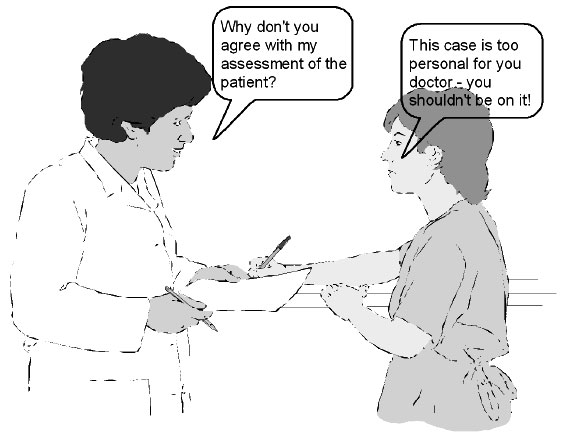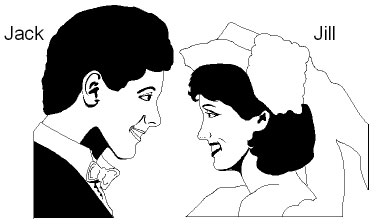Positioning
Think carefully about where you’re positioned relative to the audience. A big no-no is to have your back to the audience the whole time. Even if that might be what the script calls for, it means you can’t be marked on your range of facial expressions (a big part of performing) and your voice will be directed away from the audience, making it harder for them to understand you. So even if you’re talking to someone who’s beside you on stage, you can face a little more towards the audience than you would if you were engaged in a normal conversation.

In this hospital drama scene, we can see that the actors are both completely side on to us (the audience). While this might be OK for a little while, we will have difficulty seeing their facial expressions, so it would be good if they move to show more of their faces. Something like the scene below is nice, because two out of the three characters are facing the audience, and the third one is at least facing sideways rather than away from the audience.

Positioning is always important, but it becomes harder to organise when there is more than one person in the scene. You need to have plausible relative positioning between the characters; for instance, you can’t have two lovers sweet talking each other when they’re ten metres apart! But you also don’t want to cut out the audience. For instance, in a close-up scene where two lovers are canoodling, it’s easy for the audience to lose sight of much of their facial expressions, and their voices can become muffled. This problem is often solved by breaking up the scene with sections where one of the lovers breaks away from the other’s gaze and faces the audience, often still talking to the other. For instance:

|
Jack: |
Jill, will you marry me? I love you; I’ve always loved you. |
|
Jill: |
Oh Jack, I love you too, more than you know, more than you could possibly know. (JILL PULLS AWAY FROM JACK AND TURNS TO FACE THE AUDIENCE. JACK’S EYES FOLLOW HER AND HIS FACE IS ALSO NOW PARTLY FACING THE AUDIENCE). But how can we? Our families will never allow it. They’ll never talk to us again! |
Click here to move on to the next topic: Levels